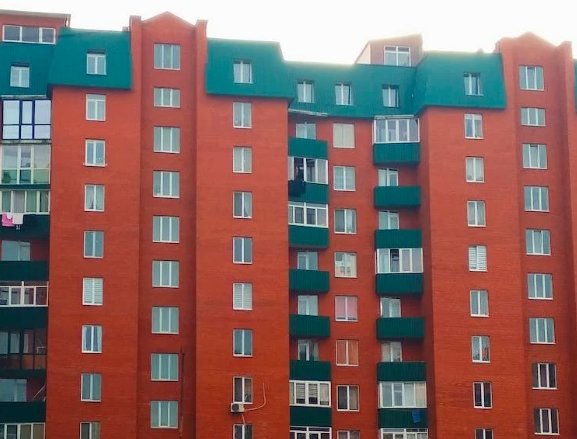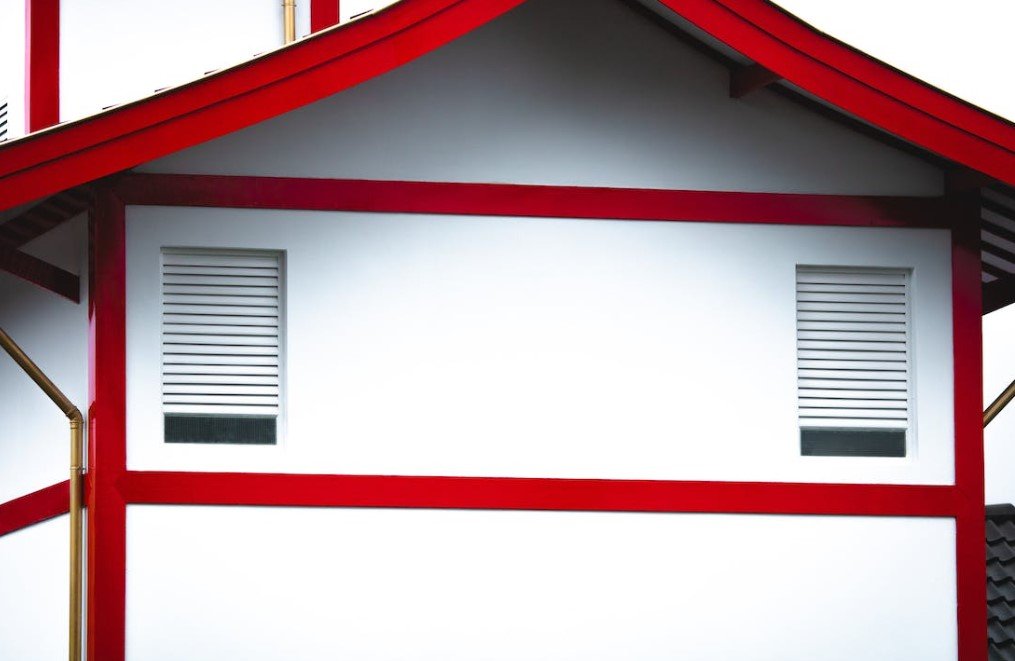Homeownership has been an integral part of the American Dream for generations. The ability to own your own home has long been seen as a sign of success and a way to build wealth. For many people, buying a home is the biggest financial decision they will make in their lifetime. However, it is not the only option. Renting can provide flexibility and affordability, but it can also leave you feeling like you have nothing to show for your money. So, what is the gap between renting and buying, and how has it changed over time?
The current state of the housing market in the U.S. has created an interesting dynamic between renting and buying. On one hand, there is an abundance of supply in the rental market, which has kept prices relatively low. At the same time, home prices are rising due to a limited supply of available homes. This has caused a widening of the gap between renting and buying, making it harder for many people to make the transition from renting to owning.
In addition to the economic factors, there are several pros and cons to consider when deciding between renting and buying. For example, when you rent, you are not locked into a long-term financial commitment, and you can move more quickly if your needs change. However, you also don’t have the same sense of security that comes with owning a home. On the other hand, when you buy a home, you have the potential to build equity and eventually own your home outright. But, the process can be expensive and time-consuming, and you may be stuck in one place for the long-term.
Overall, the gap between renting and buying in the U.S. is wide and growing. It is important to weigh the pros and cons of each option carefully to determine which choice is right for you. By understanding the current state of the housing market and the potential risks and rewards of each decision, you can make an informed decision about the best way to meet your needs.

The Financial Aspects of Renting vs. Buying
Renting has many financial aspects to consider. The costs associated with renting typically include the security deposit, monthly rent, and utilities. Depending on the rental agreement, the security deposit can range from one to three months of rent, and is usually held by the landlord until the tenant moves out. Monthly rent payments will vary depending on the size and location of the rental property, but typically include utilities such as water, gas, and electricity.
Buying a home has a different set of financial costs.
These typically include the down payment, closing costs, property taxes, and mortgage payments. Down payments are typically a percentage of the total purchase price of the home, and can vary depending on the type of loan and the lender. Closing costs can range from a few hundred to a few thousand dollars and generally cover fees associated with the loan closing and legal fees. Property taxes are usually paid on an annual basis and are based on the assessed value of the home. Mortgage payments are usually paid monthly and consist of the principal, interest, taxes, and insurance.
The long-term financial implications of renting vs.
buying are also important to consider. When renting, tenants do not build equity in the property, nor do they receive any return on their investment. When buying a home, however, homeowners can build equity by making regular payments toward the principal of their loan, as well as increase the value of their home through upgrades and improvements. This can lead to a higher net worth over time.
Ultimately, the decision to rent or buy a home should be based on individual needs and financial goals. There are pros and cons to each option, and it is important to weigh the financial costs and long-term implications carefully before making a final decision. The Financial Aspects of Renting vs. Buying Renting has many financial aspects to consider. The costs associated with renting typically include the security deposit, monthly rent, and utilities. Depending on the rental agreement, the security deposit can range from one to three months of rent, and is usually held by the landlord until the tenant moves out. Monthly rent payments will vary depending on the size and location of the rental property, but typically include utilities such as water, gas, and electricity.
Buying a home has a different set of financial costs.
These typically include the down payment, closing costs, property taxes, and mortgage payments. Down payments are typically a percentage of the total purchase price of the home, and can vary depending on the type of loan and the lender. Closing costs can range from a few hundred to a few thousand dollars and generally cover fees associated with the loan closing and legal fees. Property taxes are usually paid on an annual basis and are based on the assessed value of the home. Mortgage payments are usually paid monthly and consist of the principal, interest, taxes, and insurance.
The long-term financial implications of renting vs.
buying are also important to consider. When renting, tenants do not build equity in the property, nor do they receive any return on their investment. When buying a home, however, homeowners can build equity by making regular payments toward the principal of their loan, as well as increase the value of their home through upgrades and improvements. This can lead to a higher net worth over time.
Ultimately, the decision to rent or buy a home should be based on individual needs and financial goals. There are pros and cons to each option, and it is important to weigh the financial costs and long-term implications carefully before making a final decision.
The Emotional and Lifestyle Aspects of Renting vs. Buying
Renting and buying a home come with their own unique emotional and lifestyle aspects. These emotional and lifestyle aspects can have a significant impact on an individual’s mental health and well-being. Let’s take a closer look at the emotional and lifestyle aspects of renting and buying a home.
The Sense of Stability and Security that Comes with Owning a Home:
Owning a home can bring a feeling of stability and security to an individual. This can be especially true for those who have had instability in their lives due to moving frequently. Owning a home can provide a sense of permanence and ownership of one’s environment.
Additionally, owning a home can provide a sense of accomplishment, as it is an investment that one has made over time. This can be a source of pride for many. Homeownership can also provide a sense of financial security, as one is building equity in an asset that could be used for future needs.
The Flexibility and Freedom of Renting:
Renting a home can provide a sense of freedom for those who want to be able to move around freely. Renters don’t have to worry about the long-term commitments or obligations that come with owning a home. This can be especially appealing to those who are looking for short-term living arrangements or who want to have the freedom to move to a different area without worrying about the financial burden of selling a home.
Renting can also be financially beneficial for those who are not ready to commit to a mortgage or who don’t have the credit score or down payment that is typically required for homeownership.
The Impact of Homeownership on Mental Health and Well-Being:
Homeownership can have a positive impact on an individual’s mental health and well-being. Studies have shown that homeowners are more likely to report higher levels of life satisfaction and overall happiness than those who rent. This could be due to the sense of stability and security that comes with owning a home, as well as the sense of accomplishment that comes with it.
Homeownership has also been linked to improved physical health, as people who own homes tend to be more likely to engage in behaviors that promote physical health and safety, such as regular maintenance and upkeep of their property. Additionally, homeowners tend to have better access to social support networks and to be more involved in their local communities, which can have a positive impact on mental health and well-being.
Regional Differences in Renting vs. Buying
Renting and buying a home are two of the most common housing options in the United States. However, there are distinct regional differences in the affordability and availability of these options.
The Affordability of Renting and Buying:
Rent prices vary significantly across the country. Generally, rental prices are highest in coastal cities and large urban areas, while they are lower in suburban and rural areas. Conversely, the cost of buying a home is generally highest in suburban and rural areas, while it is lower in large urban areas and coastal cities.
The Impact of Local Housing Policies and Regulations:
Each state and city has its own housing policies and regulations that can have a significant impact on the affordability and availability of rental and buying. For example, some cities have rent control policies that limit how much landlords can charge tenants. Additionally, some states have restrictions on the type of housing that can be built in certain areas, which can affect the availability of affordable housing for low-income households.
The Availability of Affordable Housing for Low-Income Households:
The availability of affordable housing for low-income households is an important issue in many cities and states. In some areas, local governments have adopted policies that require developers to include a certain percentage of affordable housing units in new construction projects. Additionally, some cities have implemented programs that provide financial incentives to developers who build or renovate affordable housing units.
Overall, there are significant regional differences in the affordability and availability of renting and buying a home in the United States. The cost of renting and buying can vary widely depending on the local housing policies and regulations and the availability of affordable housing units for low-income households.
The Future of Renting and Buying in the U.S.
The United States is a nation of homeowners, but the trend of homeownership is shifting. The homeownership rate has declined from its peak of nearly 70% in 2004 and is now around 63%. This decline is due to several factors, including the 2008 economic recession and an increase in rental demand. The COVID-19 pandemic has had an especially drastic effect on the housing market. It has caused a sharp decline in housing sales and an increase in rental demand, resulting in higher rent prices and a decrease in the availability of affordable housing.
Trends in Homeownership Rates
The homeownership rate in the U.S. has been steadily declining since 2004, when it peaked at nearly 70%. This decline is due in part to an aging population and the 2008 economic recession. The recession caused a drop in housing prices, making it difficult for many people to purchase a home. As a result, more people opted to rent rather than buy. In addition, the increasing cost of living in many parts of the country has made it more difficult for people to save up for a down payment on a home.

Trends in Rental Demand
As the homeownership rate has declined, rental demand has increased. This is due in part to an increase in the number of young adults who choose to rent rather than buy, as well as more people who are unable to purchase a home due to the high cost of living. Furthermore, the COVID-19 pandemic has caused a sharp decline in housing sales and an increase in rental demand. This has resulted in higher rent prices and a decrease in the availability of affordable housing.
The Impact of the COVID-19 Pandemic on the Housing Market
The COVID-19 pandemic has had a drastic effect on the U.S. housing market. It has caused a sharp decline in housing sales and an increase in rental demand. This has resulted in higher rent prices and a decrease in the availability of affordable housing. In addition, the pandemic has caused many people to lose their jobs, resulting in an inability to pay rent. This has resulted in an increase in evictions, which has further exacerbated the housing crisis.
Potential Solutions for Addressing the Gap Between Renting and Buying
In order to address the gap between renting and buying in the U.S., there are several potential solutions. These include:
• Increasing access to affordable housing: Governments could work to expand the availability of affordable housing by providing subsidies for low-income families and increasing the number of public housing units.
• Creating incentives for buyers: Governments could create incentives for potential buyers by offering tax credits or other forms of assistance.
• Increasing wages: Governments could work to raise wages in order to make it easier for people to save up for a down payment on a home.
• Relaxing zoning regulations: Governments could relax zoning regulations in order to make it easier for developers to build affordable housing.
• Investing in infrastructure: Governments could invest in infrastructure projects in order to create jobs and stimulate the economy.
Conclusion
The gap between renting and buying in the US is large, and it is likely to remain so for some time. Despite the current economic climate, the gap is likely to widen even further in the coming years. The cost of living has risen significantly over the past decade, and incomes have not kept pace with the inflationary increases. This has resulted in an ever-increasing gap between renting and buying, with the majority of people being unable to afford to buy a home.
As the gap between renting and buying continues to widen, it is important to consider the implications of this trend on the economy. Unaffordable housing prices can result in lower consumer spending, which can have a negative impact on the economy. Furthermore, the inability of many people to purchase a home can lead to a lack of access to credit, which can further exacerbate the housing crisis.
Ultimately, it is important to recognize that the gap between renting and buying in the US is large and is likely to remain so for some time. It is essential to consider the implications of this gap on the economy and how to best address the issue. Solutions such as increasing housing supply and making housing more affordable through tax credits and subsidies may help to reduce the gap between renting and buying in the US.
FAQs
1. What is the difference between renting and buying a home in the US?
When you rent a home, you are paying for the right to live in the property for a certain period of time. When you buy a home, you are purchasing the property and will own it.
2. How much of a gap is there between renting and buying a home in the US?
The gap between renting and buying a home in the US can vary depending on location and housing market. Generally, it is more expensive to own a home than it is to rent in most areas.
3. How does the gap between renting and buying a home in the US affect people?
The gap between renting and buying a home in the US can affect people by limiting their housing options. Owning a home is typically more expensive than renting, which can make it difficult for people to purchase their own home.
4. Are there any advantages to renting a home in the US?
Yes, there are several advantages to renting a home in the US. Renting a home can provide flexibility and mobility, as it is typically easier to move from one rental property to another than it is to sell a home. Renting also often requires a smaller upfront cost than buying, which can make it more accessible for some people.
5. What are the benefits of owning a home in the US?
There are several benefits of owning a home in the US. Owning a home can provide a sense of security, as you are able to stay in the same location for as long as you want. Homeowners also often build equity in their homes, as the value of the property can increase over time. Additionally, homeowners may be able to take advantage of tax deductions.
6. Are there any programs that can help bridge the gap between renting and buying a home in the US?
Yes, there are a number of programs that can help bridge the gap between renting and buying a home in the US. Programs such as the Federal Housing Administration’s (FHA) Home Loan program provide mortgages with lower down payments and interest rates, which can make it easier for people to purchase a home. Additionally, some states and local governments offer down payment assistance programs, which can also help bridge the gap between renting and buying a home.
7. Is it cheaper to rent or buy a home in the US?
The answer to this question depends on location and housing market. Generally, it is more expensive to own a home than it is to rent in most areas.
8. What factors should be considered when trying to decide between renting and buying a home in the US?
When trying to decide between renting and buying a home in the US, it is important to consider factors such as location, housing market, your financial situation, and your lifestyle.
9. How has the gap between renting and buying a home in the US changed over time?
The gap between renting and buying a home in the US has changed over time due to a variety of factors, including changes in the housing market, interest rates, and the availability of credit.
10. What are the long-term costs associated with renting and buying a home in the US?
The long-term costs associated with renting and buying a home in the US can vary depending on location and housing market. Generally, owning a home requires more upfront costs, while renting requires more ongoing costs such as rent payments and utilities. Additionally, homeowners may be able to take advantage of tax deductions, which can help reduce the overall cost of owning a home.














